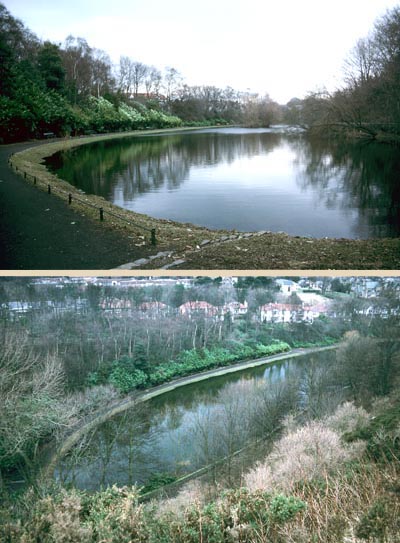Blackford Pond

Blackford Pond
Blackford Pond is crescent-shaped and lies in a small public park, surrounded by planted rhododendrons, deciduous trees and shrubs, and conifers. There is a path along the whole of the north-western side of the pond, but the eastern side is almost inaccessible. There is a small island near the centre. The pond is not natural but was created in the nineteenth century, as the city expanded. On the east side, the pond is flanked by the crags of Blackford Hill, while to the SW there are garden allotments, which probably add considerably to the nutrient loading of the pond, which fills by groundwater seepage. There is no visible inflow and a drain at the north-east end keeps the level stable, except in the wettest weather. In the 1980s, the pond regularly froze in winter, at least around its margins, but a covering of ice is now very unusual. The pond is generally home to many tens of ducks, geese, swans and gulls, fed by oversentimental children and grandparents. It used to be used by the University of Edinburgh ecologists for demonstrations of the mark-recapture method for assessing the size of fish populations.
These views were taken in the 1980s, before the Parks Department of the City Council made significant alterations to the pond and its perimeter. The top photograph shows the pond from the SW end, a view now obscured by shrubs and reeds (Phragmites). The principal sampling site David Mann used (throughout the 1980s and subsequently, apart from a brief period in 1980-1982) is at this end, 3-15 m offshore, in 30-60 cm water depth. The sediment here is very fine and organic and highly reduced (black) except at the surface. The lower photograph was taken from Blackford Hill.

 This site is hosted by the Royal Botanic
Garden Edinburgh.
This site is hosted by the Royal Botanic
Garden Edinburgh.